Boutique Cartier Genève, Geneva
The Cartier Style: High Jewelry Exhibition Geneva
Luxferity, 10.12.2021

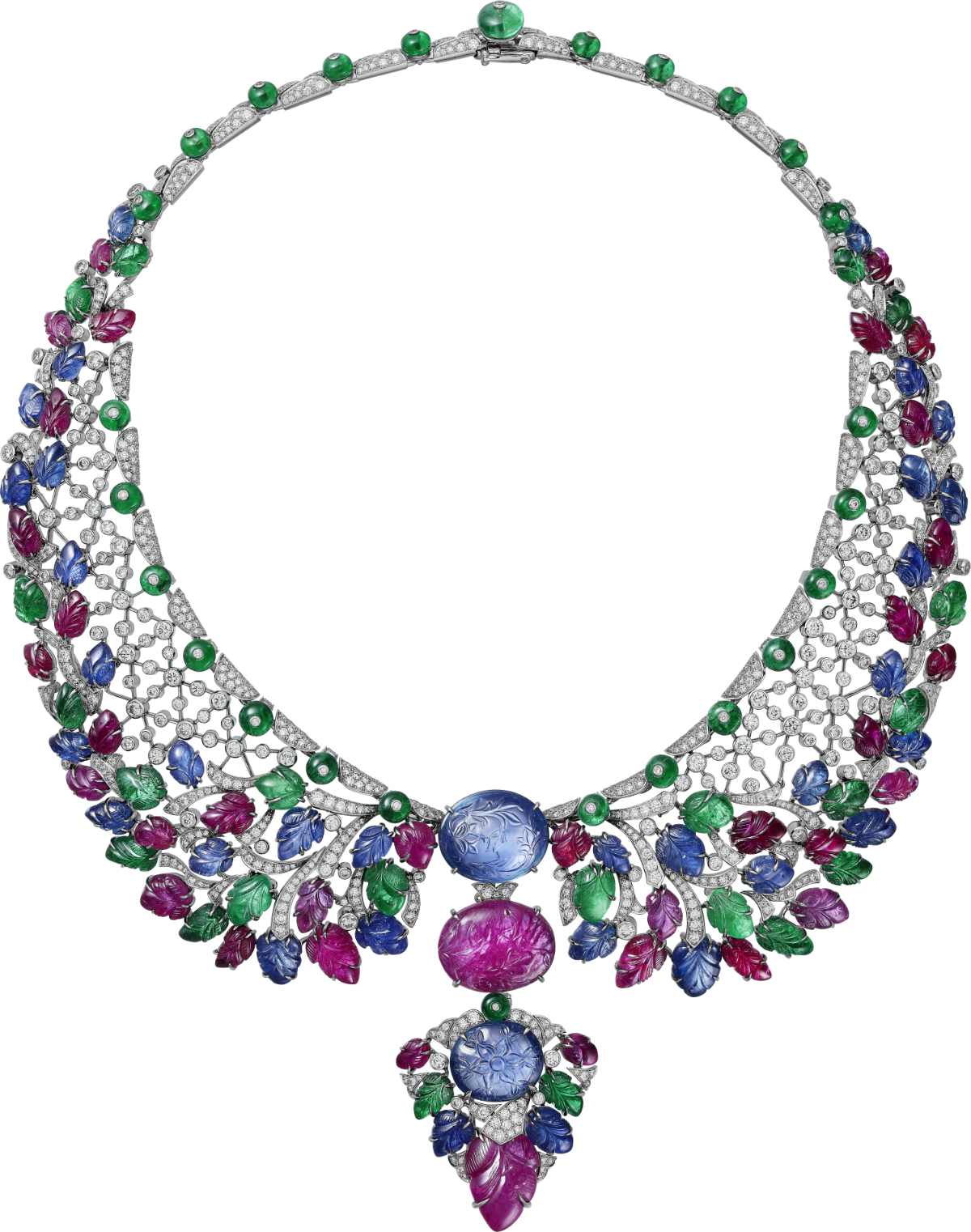
“A pioneer in the history of the applied arts, Louis Cartier quickly established the foundations of a unique style. A singular vision of beauty, timeless and instantly recognisable.
A love of minimalism, a sense of harmony and proportion, clear lines and essential forms, a distinctive colour palette… Like a living language, the Cartier style is founded on this grammar, and an aesthetic vocabulary that has been constantly enriched over the years.
A common language shared by the Maison’s master jewellers, designers and craftsmen. Their watchwords? Excellence, creativity and innovation, channelled to showcase the stones. Their uniqueness, their light, their magic.”
PIERRE RAINERO, Image, Style and Heritage Director
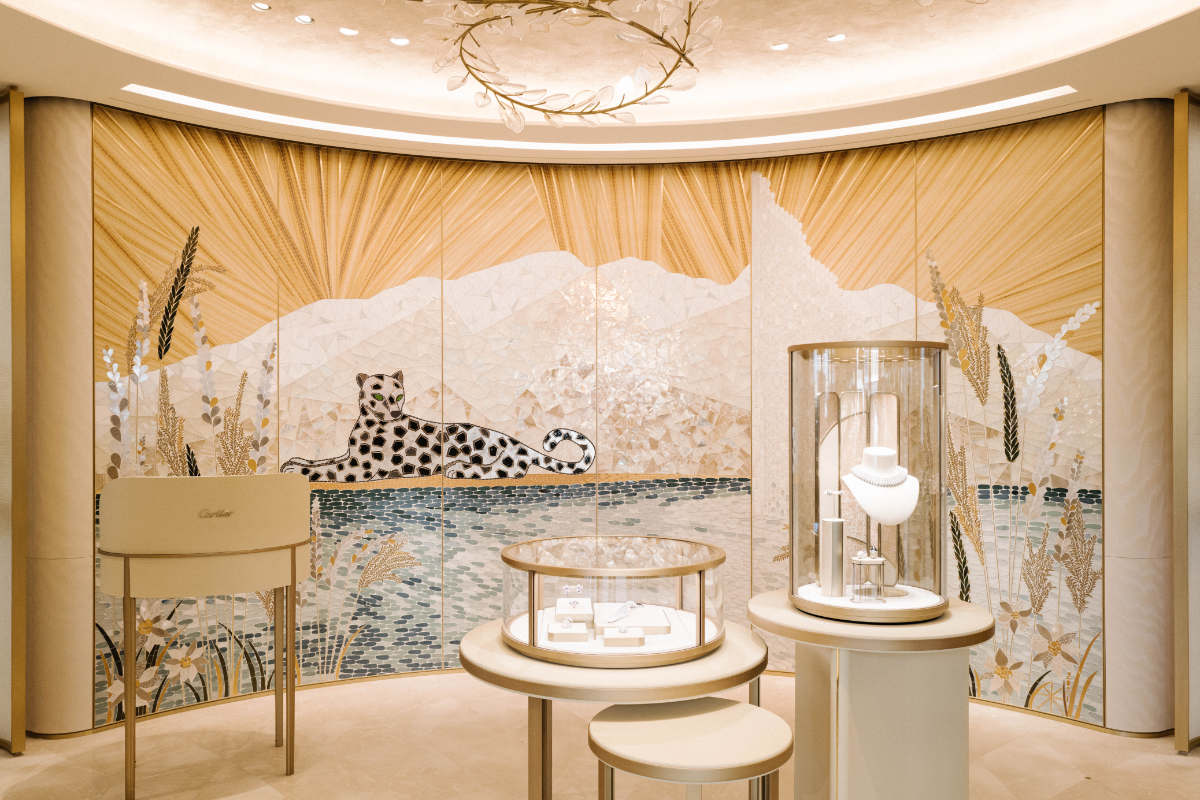
The Maison is organising a high jewellery exhibition centered on these key signatures of the Cartier style, open to the public from 11th to 18th December at its boutique 35 rue du Rhône, Geneva.
Fully renovated after several months of work, this iconic boutique on the shores of Lake Geneva, set within a Brutalist building designed by architect Pierre Braillard, devotes all of its new spaces to almost 400 exceptional pieces, all linked by how they illustrate the Cartier style.
CHAPTER 1: COLLECTIONS
THE CARTIER COLLECTION
Capital of expertise and excellence, Geneva has provided the ideal location for housing the Cartier Collection since 1983. Formed of more than 3000 pieces dating from 1860 to 2000, it is a unique compendium. This pioneering Collection has since been the subject of numerous exhibitions organised across the world, from the Musée du Petit Palais in Paris to the Hermitage in St Petersburg, the Metropolitan Museum in New York and the Tokyo National Museum. For almost thirty‑five years to today.
“THE MAIN MISSION OF THE CARTIER COLLECTION HAS BEEN TO BRING ALMOST 170 YEARS OF CREATIVITY TO THE PUBLIC. THROUGH MAJOR INDIVIDUAL EXHIBITIONS ORGANISED BY THE WORLD’S MOST PRESTIGIOUS MUSEUMS , IT RETRACES CHANGES IN HOW WE LIVE, AND IN THE IDEAS AND HISTORY OF ART. ITS OBJECTIVE IS ALSO TO PASS ON THIS HERITAGE AND STYLE TO FUTURE GENERATIONS, TO ALLOW THEM TO UNDERSTAND THE HISTORY OF CARTIER WHILST PLACING IT WITHIN ITS CONTEXT,” PASCALE LEPEU, Curator of the Cartier Collection.

CARTIER TRADITION
Focussed on the timeless qualities of the Maison’s creations, the Cartier Tradition department curates items of jewellery, watches and clocks, and precious objects for a distinct clientèle of collectors. Each creation is carefully selected, then authenticated by the Maison’s experts, using archives. It is then meticulously restored by specialist jewellers and watchmakers, who preserve and perpetuate traditional forms of expertise.
“CARTIER TRADITION PROVIDES AN EXCEPTIONAL SERVICE TO A CLIENTÈLE WISHING TO BUY OR SELL CARTIER CREATIONS . FACED WITH A LARGE NUMBER OF PIECES WITH UNCERTAIN ORIGINS, SOME OF WHICH HAVE BEEN HEAVILY ALTERED, ON SALE COMMERCIALLY OR IN AUCTION HOUSES, ONLY CARTIER IS ABLE TO PROVIDE A VERITABLE GUARANTEE AS TO THE AUTHENTICITY, QUALITY AND CONDITION OF ITS CREATIONS,” PIERRE RAINERO, Image, Style and Heritage Director.
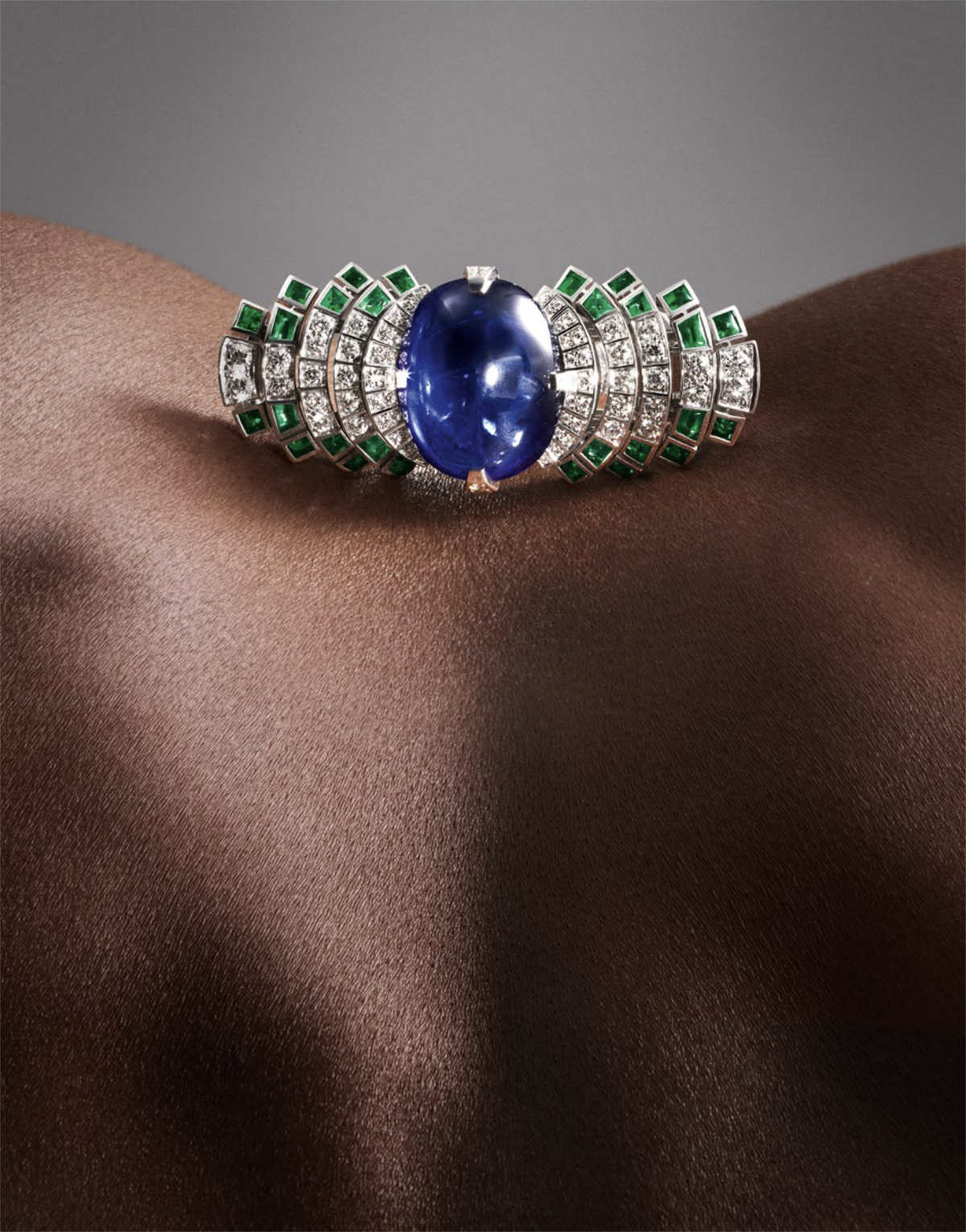
CONTEMPORARY HIGH JEWELLERY COLLECTIONS
Every year, Cartier releases a High Jewellery collection composed of unique pieces. These collections serve to continuously enrich the aesthetic vocabulary of the Maison.
The creation of these exceptional pieces is guided by a vision of beauty, harmony of proportions, bold contrasts and curiosity. They each have an intrinsic technical virtuosity – invisible yet omnipresent – devoted to aesthetic perfection.
“THE STARTING POINT FOR EACH HIGH JEWELLERY COLLECTION IS A CONTEMPLATION OF THE STONES. THE STONES SELECTED WILL BE OUR SOURCE OF INSPIRATION ABOVE ALL ELSE,” JACQUELINE KARACHI, Creative Director, Haute Joaillerie and Haute Horlogerie.
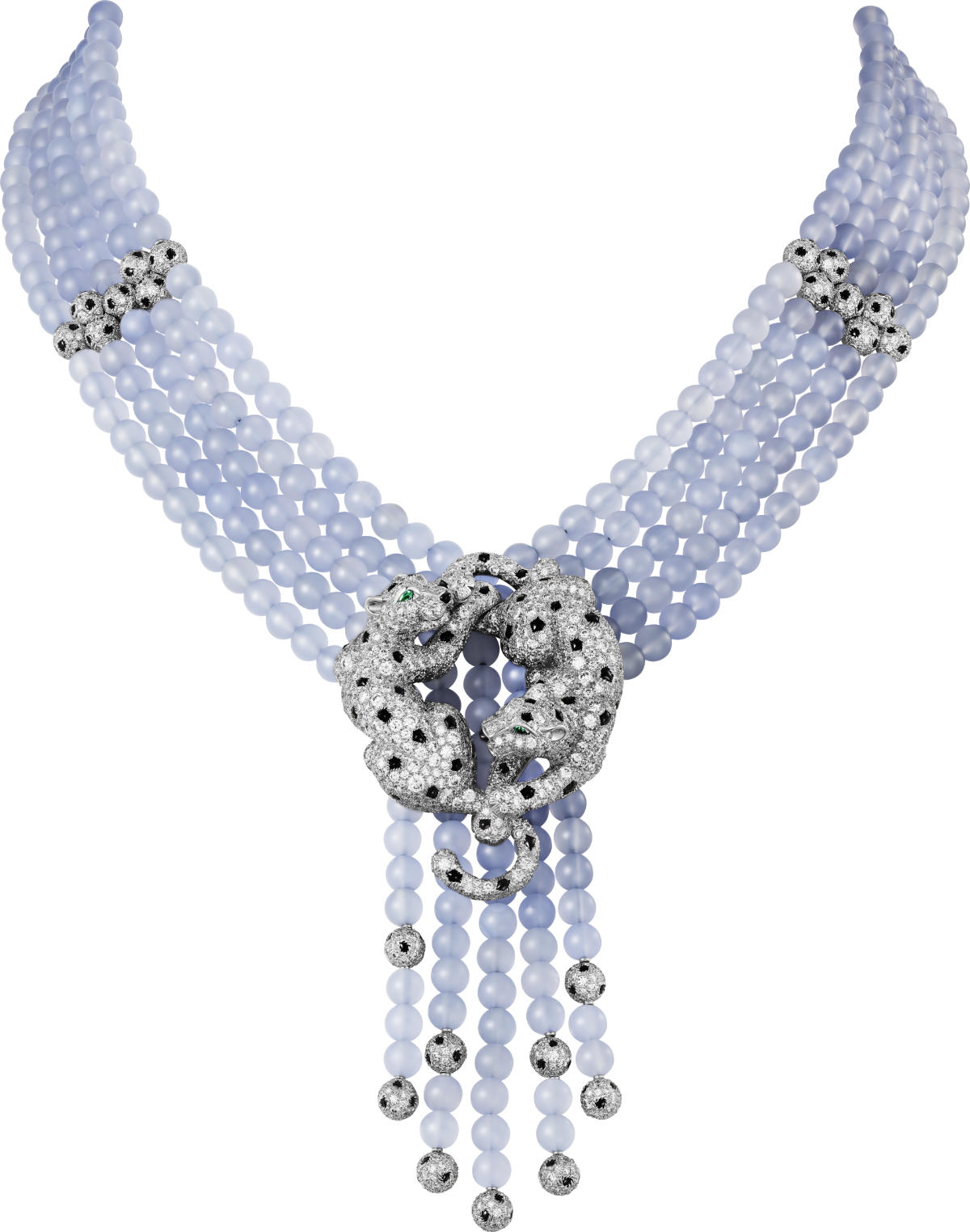
CHAPTER 2: THE MARKER OF THE CARTIER STYLE
An exploration of beauty, and the enhancement of light: those are the two major axes that have formed the Cartier style since the early 20th century. It is marked by four signatures which are intrinsic to the Maison, and for which jewellery provides the most spectacular of vectors.
Architecture and minimalism, Geometry and contrast, Flora and fauna, and Cultural dialogue form the Maison’s key territories for expression, which remain as vital as ever with Cartier incorporating them into each of its new creations, however diverse they may be.
The Maison’s styles have their own history, expertise and devotees. So distinctive, they shape the identity of Cartier, recognisable at the very first glance.
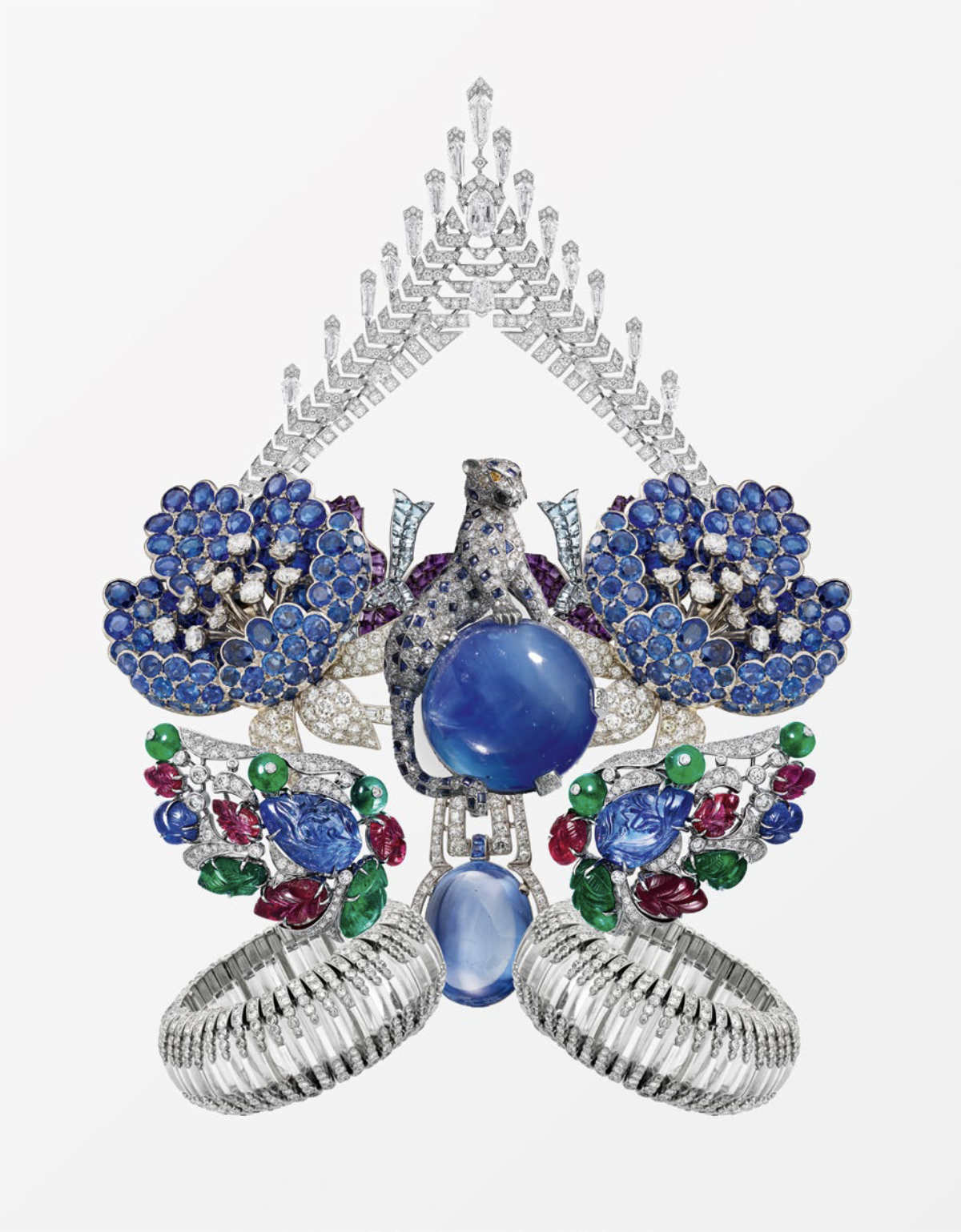
ACCLAIMED BY MUSEUMS ACROS S THE G LOBE, THEY HAVE BECOME LEGENDARY IN THE WORLD OF HIGH JEWELLERY.
EPURE & ARCHITECTURE
Everything can be said with understatement… This minimalist philosophy is the cornerstone of the Cartier style. It all comes from the silhouette, the precision of lines, the balance of forms, the precision of volumes, a certain sense of proportion and harmony in how the piece as a whole is divided. A stylistic approach designed to enhance the light.
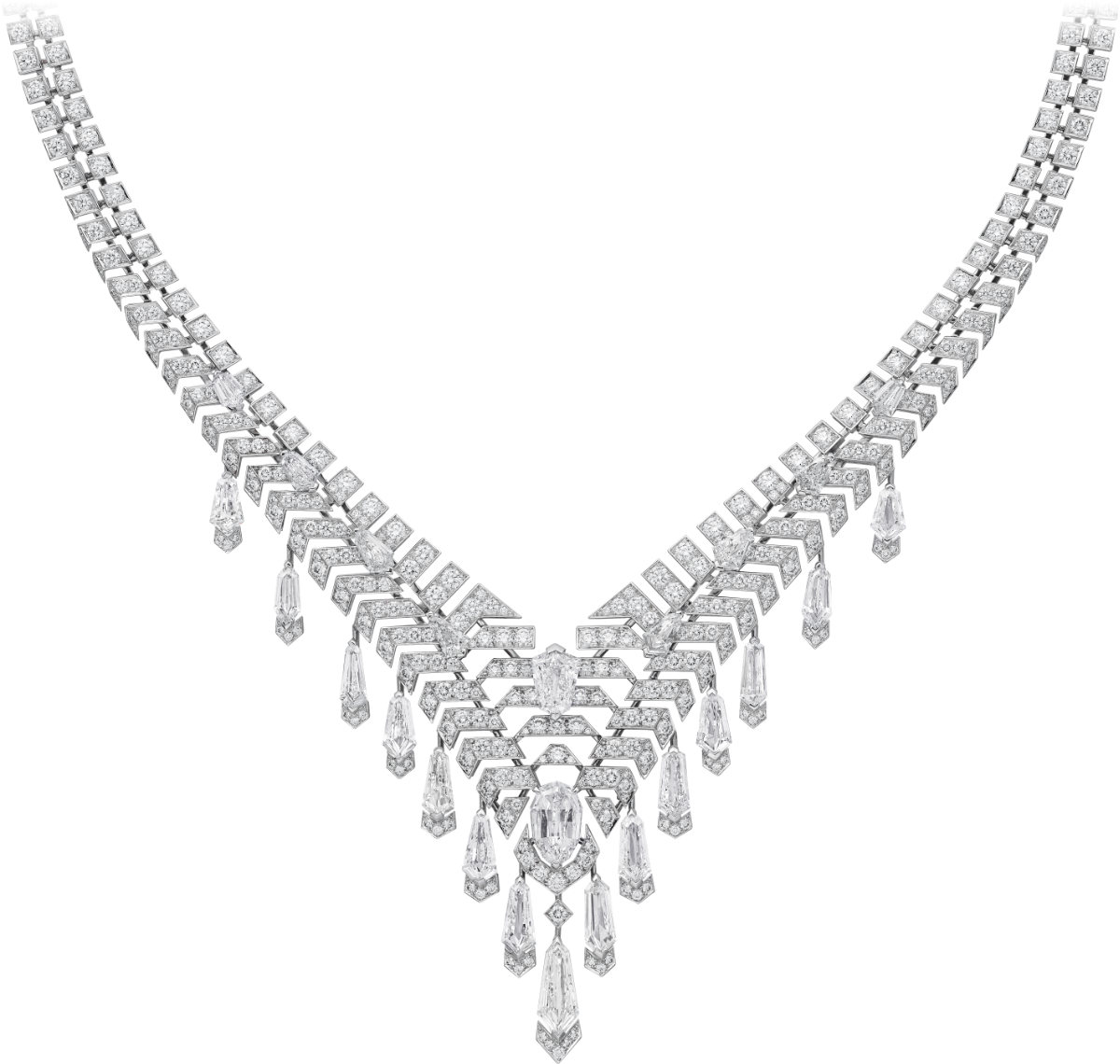
Like an architect, Cartier directs light to reveal the brilliance of the Diamond. It was platinum that allowed the jeweller to revolutionise the use of diamonds. Louis Cartier was the first to use it regularly for his pieces, at the very end of the 19th century. Stronger than other precious metals, its resilience allowed the creation of more delicate pieces than ever before: He compared this to "embroidery". The stones were freed from their imposing gold or silver settings, revealing all the light hitherto eclipsed. Add to this the fact that platinum’s brilliance does not fade over time, enhancing that of the diamonds, which sparkle as never before under the newly installed electric lights. The appearance of platinum went hand in hand with the introduction of the Garland style. Rejecting the excesses of Art Nouveau, Louis Cartier honed his own aesthetic, inspired by 18th century France. He was drawn towards the architectural motifs of the time. The ornamental repertoire of the Neo-Classical period dovetailed with that of the jeweller: iron filigree, trimmings, floral garlands, foliage arabesques or intertwining scrolls – as we can see here on this Cartier Tradition piece – provided a range of stylistic motifs for highly refi ned jewellery. Delicate and ethereal, timeless in its design, yet innovative in the use of platinum, this new style of jewellery was an immediate success, helping the Maison to enhance its international reputation, from Paris to St Petersburg, London and New York. Louis Cartier had now laid the foundations for the Cartier style
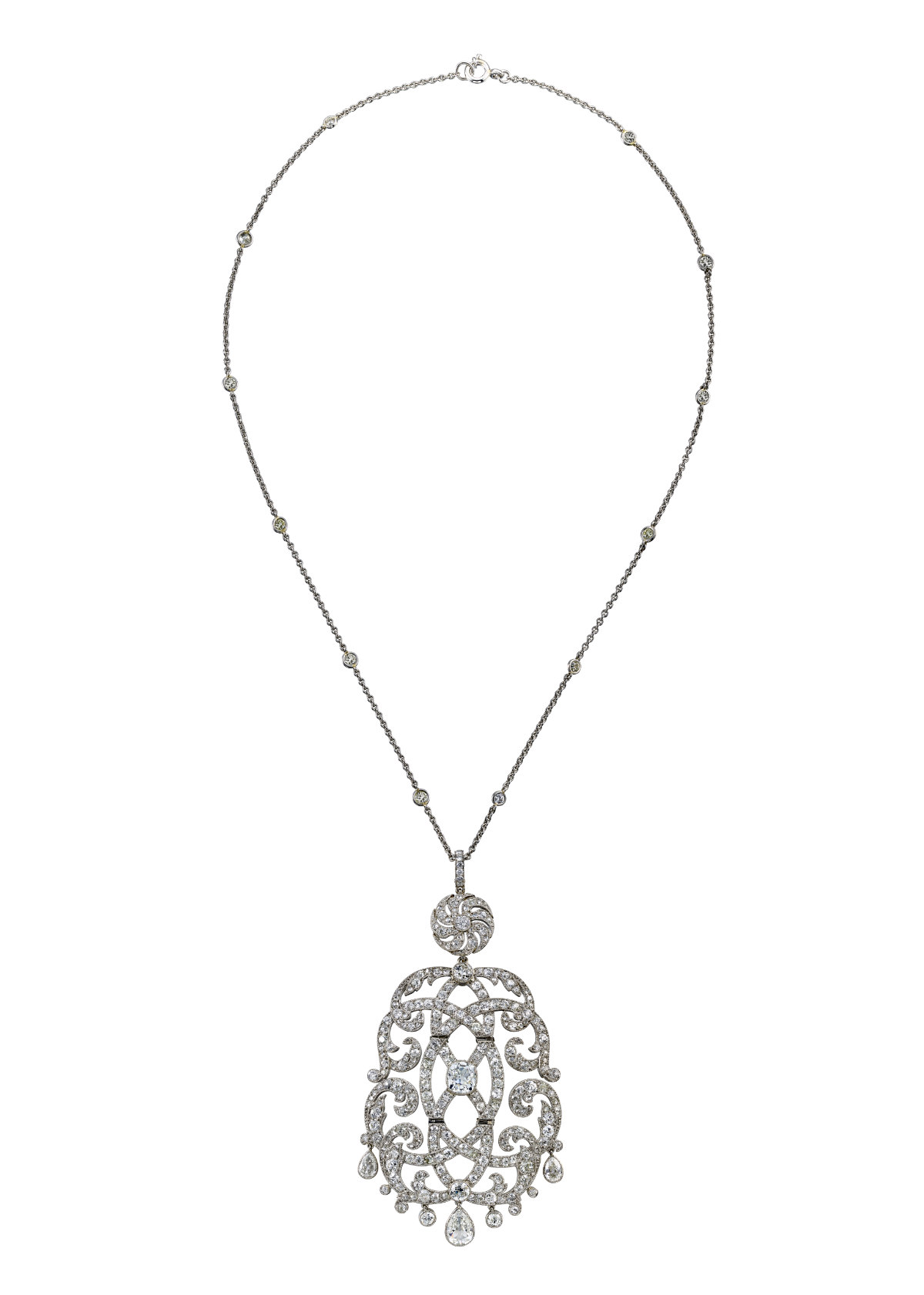
LIKE A L IVING LANGUAGE, IT HAS EVOLVED CONTINUOUSLY EVER SINCE, ENRICHED BY A NEW VOCABULARY, FOUNDED ON A GRAMMAR WHICH BORROWS ITS SENSE OF PROPORTION FROM THE CLASSIC STYLE: A BALANCED RATIO BETWEEN FORM, VOLUME AND LINES.
Like an architect, Cartier uses the cut of the stones to create constructions which alternate solid surfaces and recesses to outline or emphasise the form of a ray of light or shadow. Like an architect, Cartier plays with the properties of materials such as diamond and rock crystal, which allow the jewellery creations to expand to fi ll the physical space. The actresses of the silver screen understood this power well, echoing the white of this monochrome world, as Gloria Swanson did in the film Perfect Understanding (1933) when she added two Cartier crystal and diamond bracelets to her wrist.
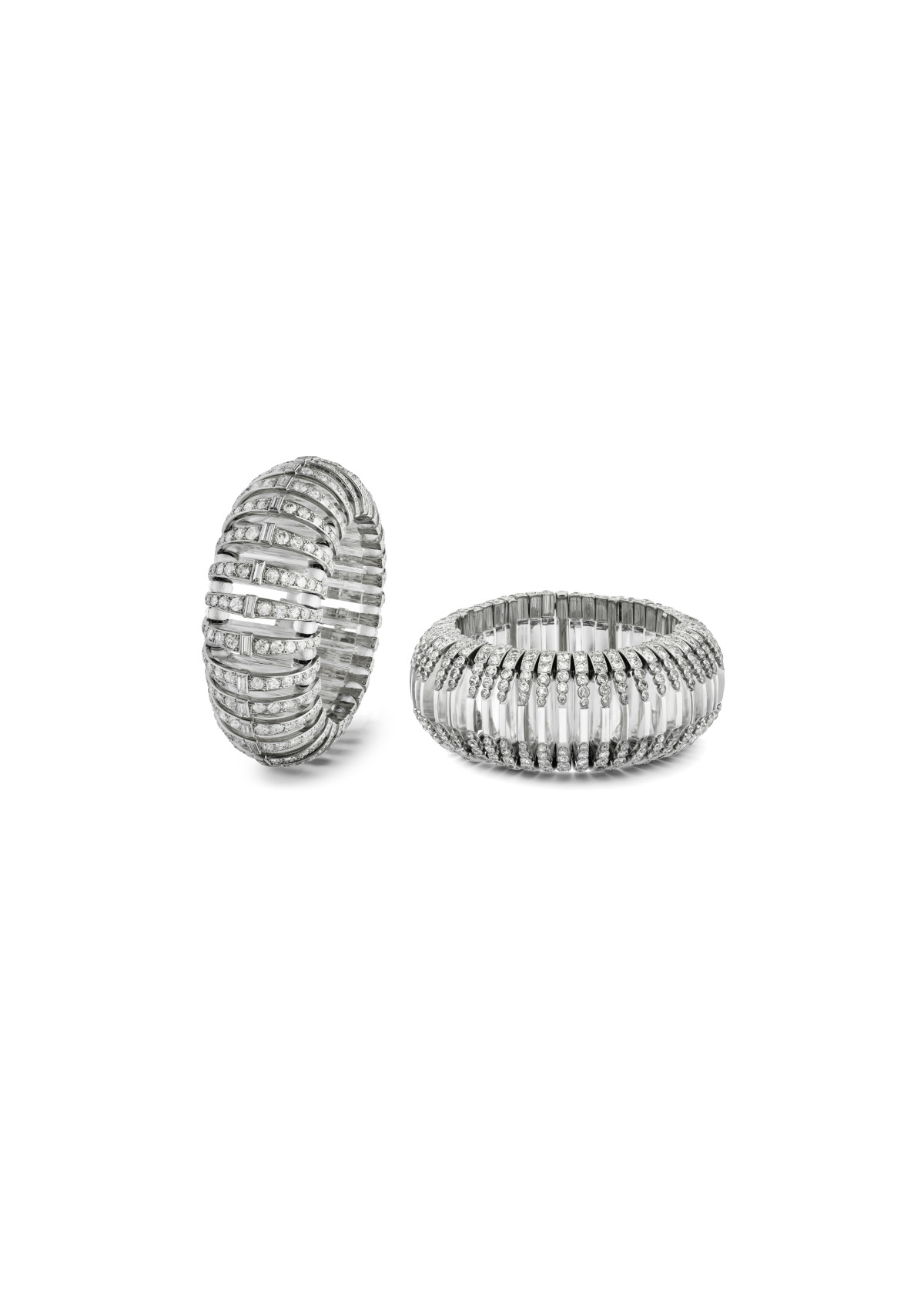
CULTURAL DIALOGUE
The Maison has always had a passion for the World and its cultures, exploring the diversity this offers.
China, the Middle East, India, Egypt, Russia… For over a century, all of these territories served to inspire Cartier.
This interest and curiosity are the legacy of a long affi liation. Alfred, the Maison’s founder, was a scholar of Oriental languages. Later, his three grandsons, collectors, aesthetes and intellectuals, started to build creative bridges between cultures at the start of the last century, and Cartier has enriched these over time.
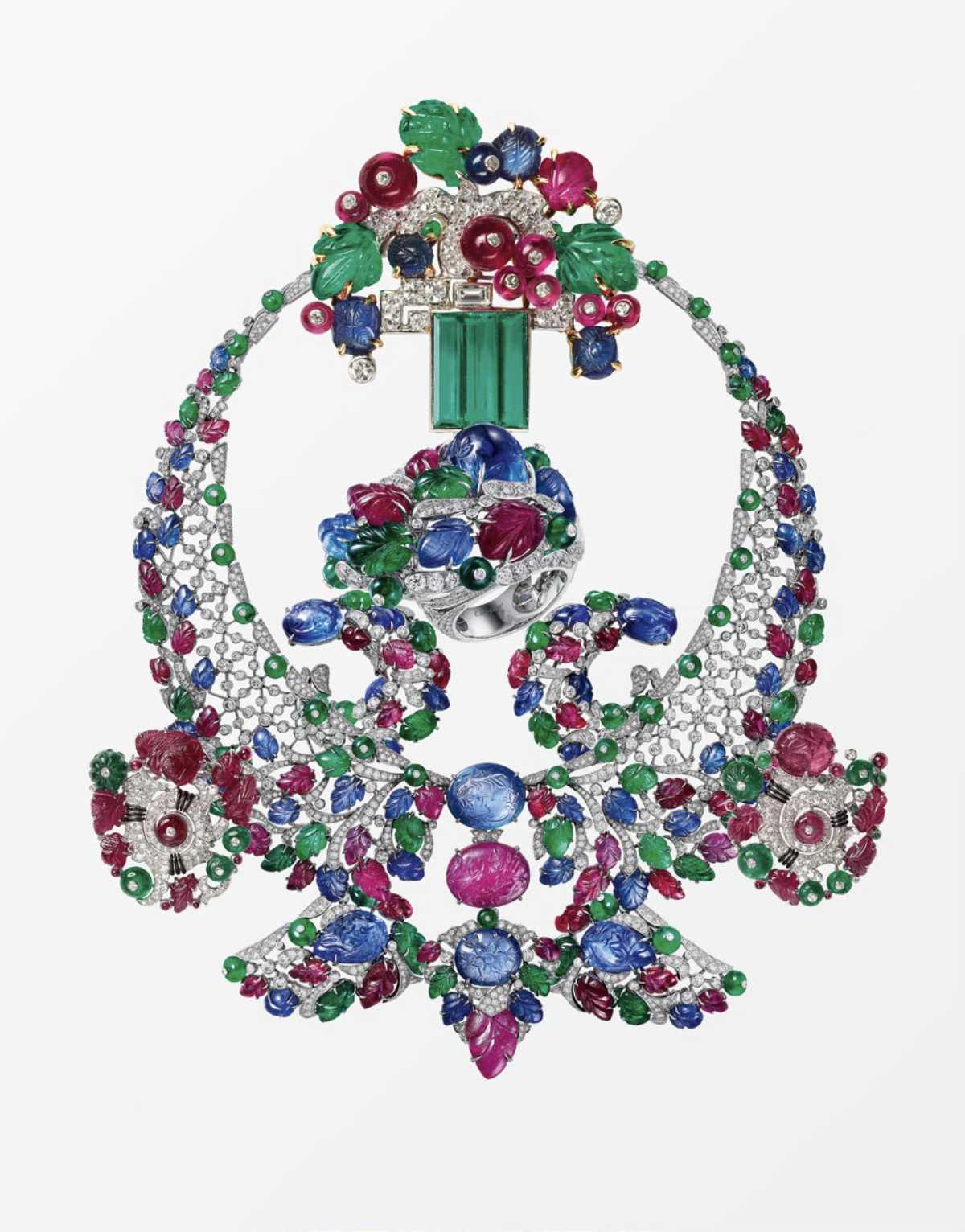
The worldly curiosity of Jacques, one of the Cartier brothers, took him to India in 1911. There he discovered the ancient art of stone lapping, original motifs, and the opulence of Indian princes. Floral compositions of cut stones – emeralds, rubies, sapphires – engraved with motifs of fl owers, fruits and palmettes, inaugurated a new style which was later named “Tutti Frutti”.
THIS LUXURIOUS, FLAMBOYANT STYLE HAS LOST NONE OF ITS FLAVOUR OVER THE DECADES .
GEOMETRY & CONTRAST
Geometry and contrast are two powerful signatures of the Cartier style based, on the form and the motif, designed to create symmetry or asymmetry, parallelism and perspective, and, on the strength of the intense colour contrasts that the Maison first introduced in the early years of the 20th century.
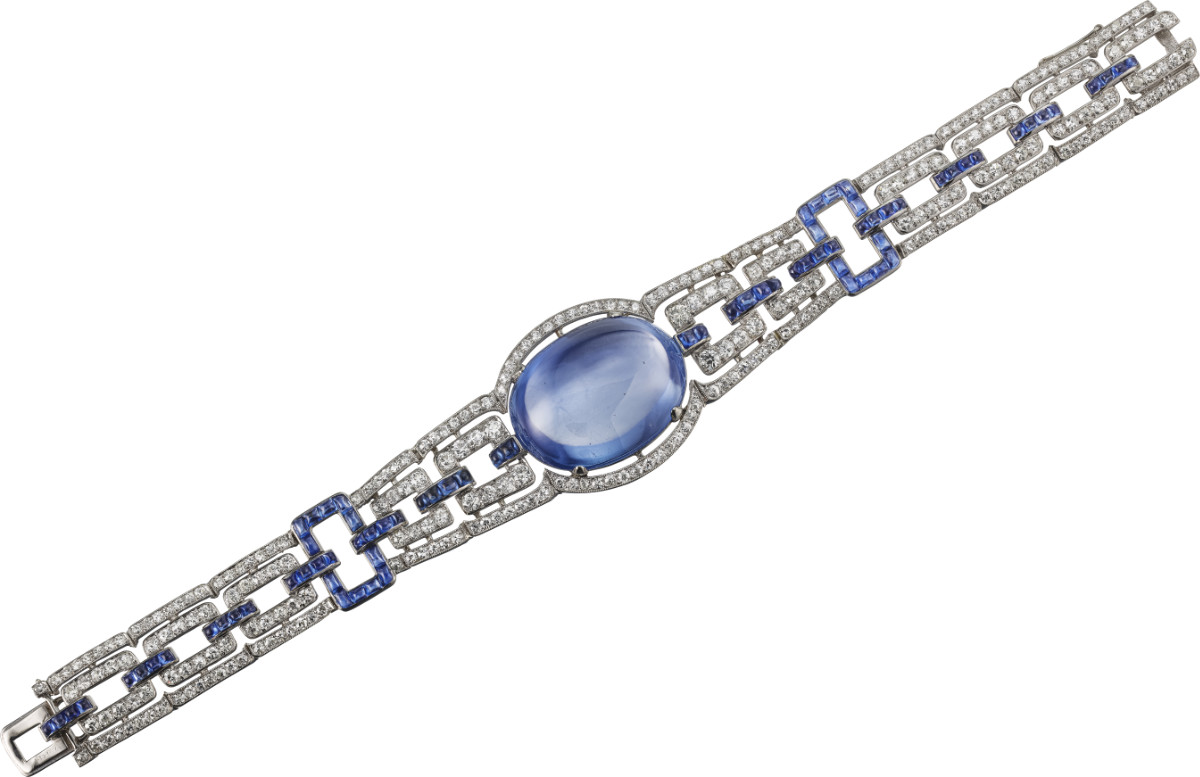
IInextricably linked with the Cartier style, geometry and contrast are still the subject of ongoing creative research, which delves ever deeper, exploring the domain of kinetic art. Cartier makes use of these graphic codes in its contemporary collections to suggest movement and confuse the eye.
As early as the turn of the 20th century, when the Neo‑Classical‑inspired garland style was at its height, the Maison’s designers, at Louis Cartier’s behest, turned their focus to abstract and geometric forms. In 1903, they introduced vivid colours and brand new forms: simple cubes, polygons, and rhombuses in calibrated coloured stones. Emerging alongside the birth of Cubism, this style, dubbed “modern”, introduced geometry and contrast to the Cartier grammatical framework and, more broadly, into jewellery and the decorative arts, before the advent of Art Deco.
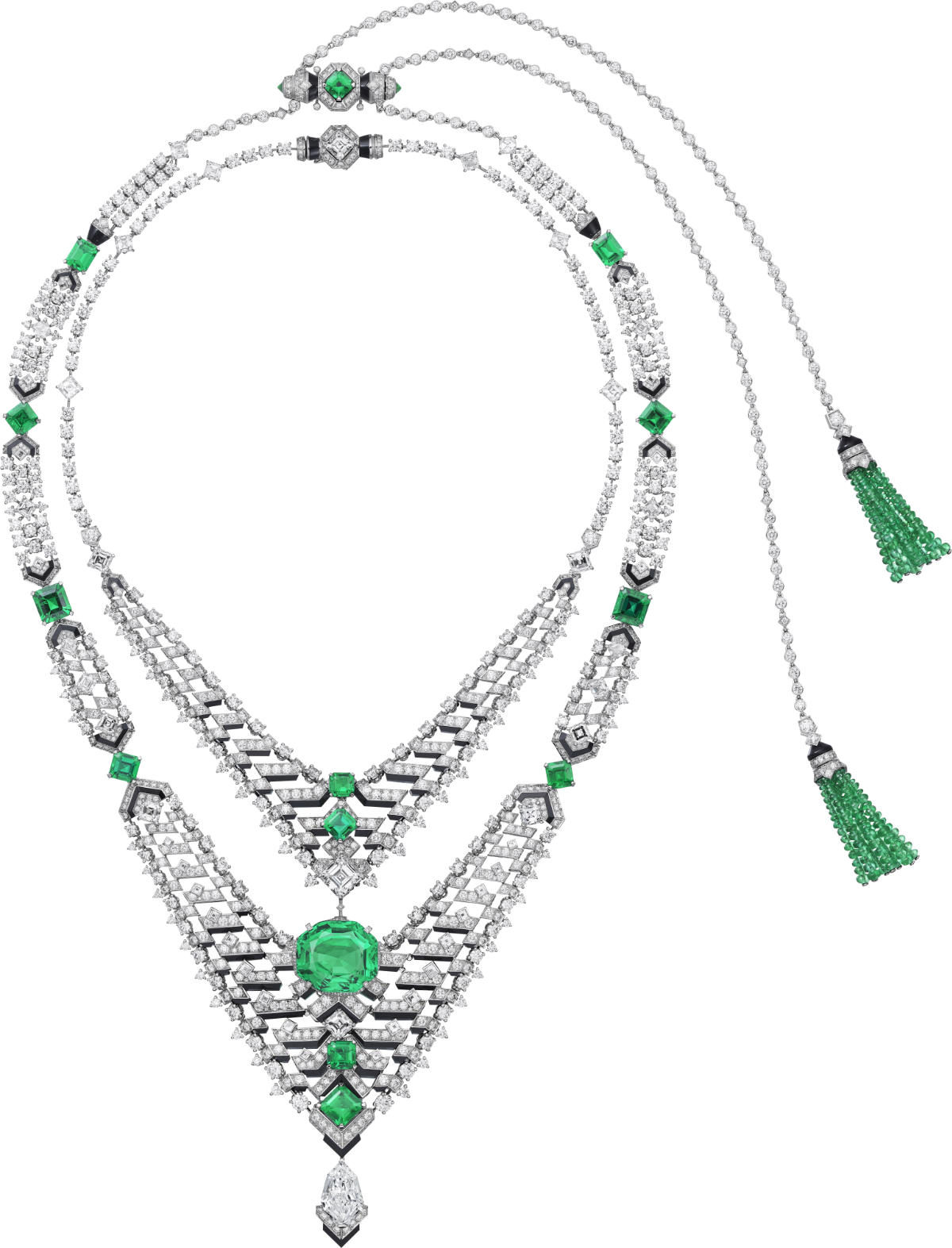
Taut lines, lively details, geometric forms, mirrored construction, the graphic motifs of the Imperio necklace are further accentuated by the colour contrast created by the black onyx and the green emeralds. This colour combination has featured in the Maison’s stylistic repertoire since 1910 as it heightens the sense of perspective.
All elements are designed to confuse the eye, drawing it towards the central stone: an exceptional flawless emerald from Colombia, weighing 23.55 carats.
THIS OCTAGONAL STONE, A PERFECTLY UNIFORM GREEN WITH SUBTLE BLUE UNDERTONES, MATCHES THE OTHER EMERALDS SET IN THE PIECE PERFECTLY.
A FLAIR FOR COLOUR
The Maison’s original approach to showcasing colour through decorative compositions came to prominence in the 1920s.
Experimenting with stones and the visual effects that their juxtaposition creates, harmonious colour matches became a signature of the Maison. Jeanne Toussaint, creative director from 1930 to 1970, took exploration of colour even further. The use of new gemstones such as turquoise and amethyst contributed to this. Precious, semi-precious and ornamental stones…
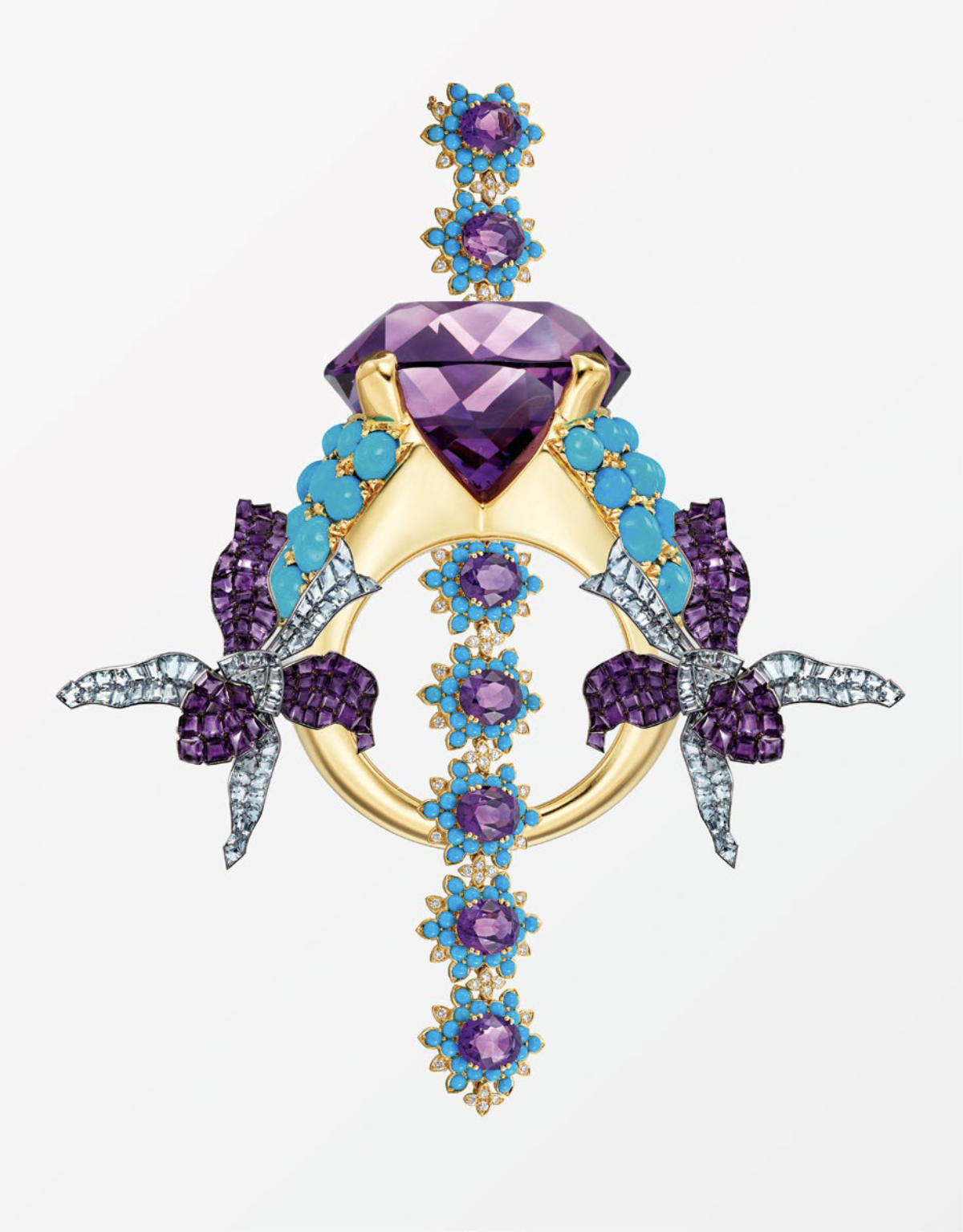
TO THIS DAY, THEY PROVIDE A RICH RANGE OF SHADES THAT CARTIER CONTINUES TO EXPLORE .
One of the main characteristics of Jeanne Toussaint’s approach was the abundance of noble materials employed. “Like a great painter experimenting with very beautiful stones”, to use the words of Hubert de Givenchy, Jeanne Toussaint created her own palette, opulent and flamboyant. This included brand new combinations such as amethyst and turquoise – a pairing which was to become one of her signatures. Cecil Beaton, the epitome of his era’s refinement, confirmed in his book The Glass of Fashion that “Mademoiselle Toussaint […] creates combinations of colours only ever seen before in jewellery from the Indies”.
FLORA & FAUNA
At Cartier, the themes of flora and fauna are imbued with the same energy that animates every piece of jewellery created: not romantic or precious, it boasts a strong vision of femininity, conviction, and freedom of spirit.
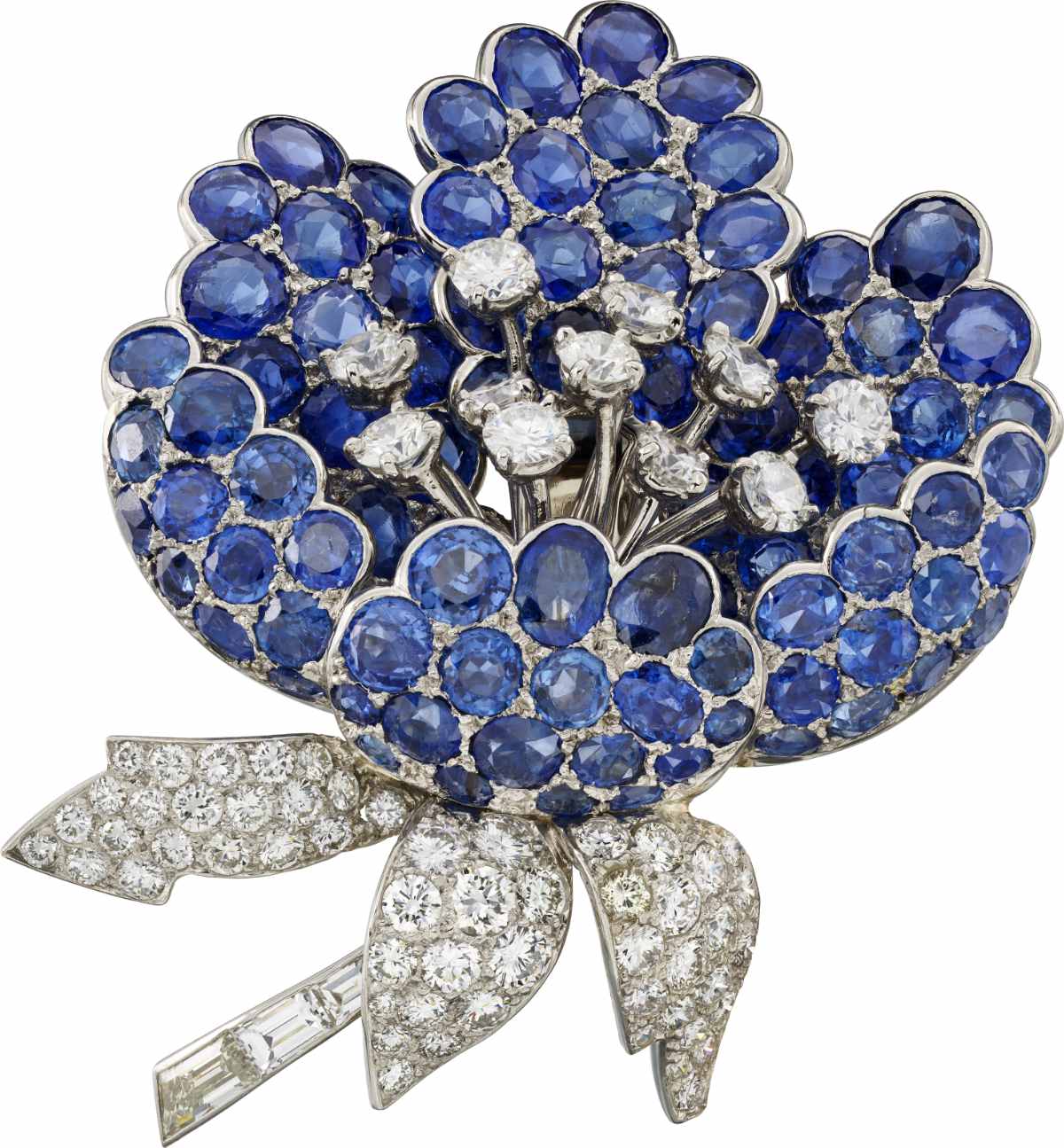
The Maison’s unique approach is based on: Its choice of distinctive flowers: orchids, thistles, cactus... A bold repertoire of flowers, and an interest in original specimens, some with remote origins, such as Asian ferns or Egyptian palms. Its choice of wild, untamed, predatory animals: the panther, crocodile, snake and, once again, creatures from distant shores, such as the chimera of the Far East. And then, there is Cartier’s interpretation of these. This is translated by the design: the torsion of a stem or petals, the tension of a silhouette. An approach which oscillates between hyperrealism, stylisation and abstraction.
Right from the start, the flora and fauna attracted a generation of strong women who see themselves reflected here, using this style to make their statement. One of the most iconic of these is certainly Mexican actress María Félix, who commissioned her crocodile necklace in 1968; it is now part of the Cartier Collection and has been exhibited in museums across the world.
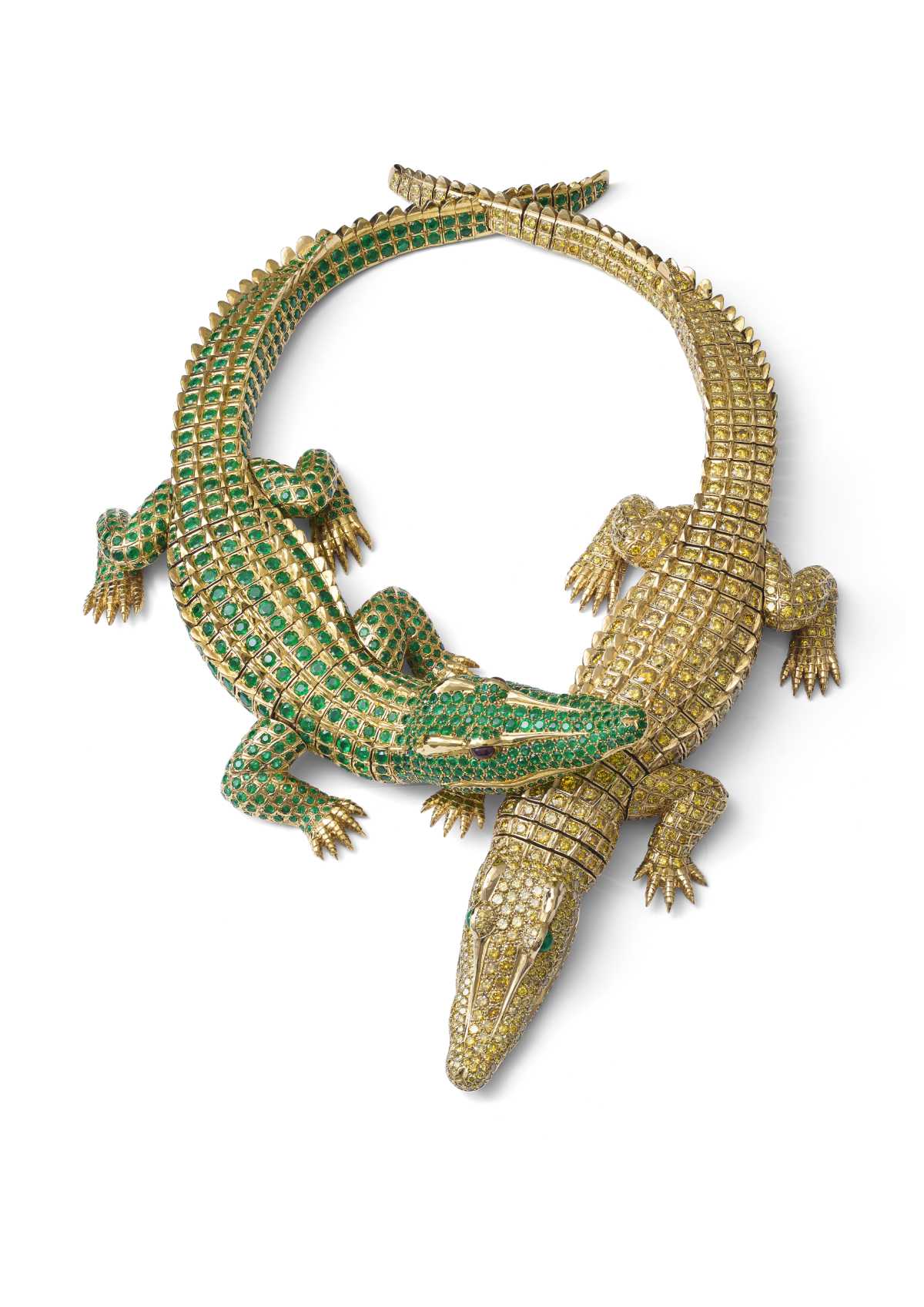
The naturalistic interpretation of the flora and fauna comes largely from keeping proportions as accurate as possible. This preoccupation was particularly important to Jeanne Toussaint, who was creative director between 1933 and 1970. The Panthère has been a signature Cartier creation since its first incarnation on a wristwatch in 1914, with a striking spotted coat. It provides a complete source of inspiration, reinvented as time passes: naturalistic, sculptural, graphic. The true challenge is to ensure it always has life and movement; this requires both inventive design and technical accomplishment. An active dialogue between the two is the key to its eternal creative vitality. The visionary Jeanne Toussaint brought the panther to life in 1948, imagining it in three dimensions. Since then, the panther has prowled through the Maison’s history.
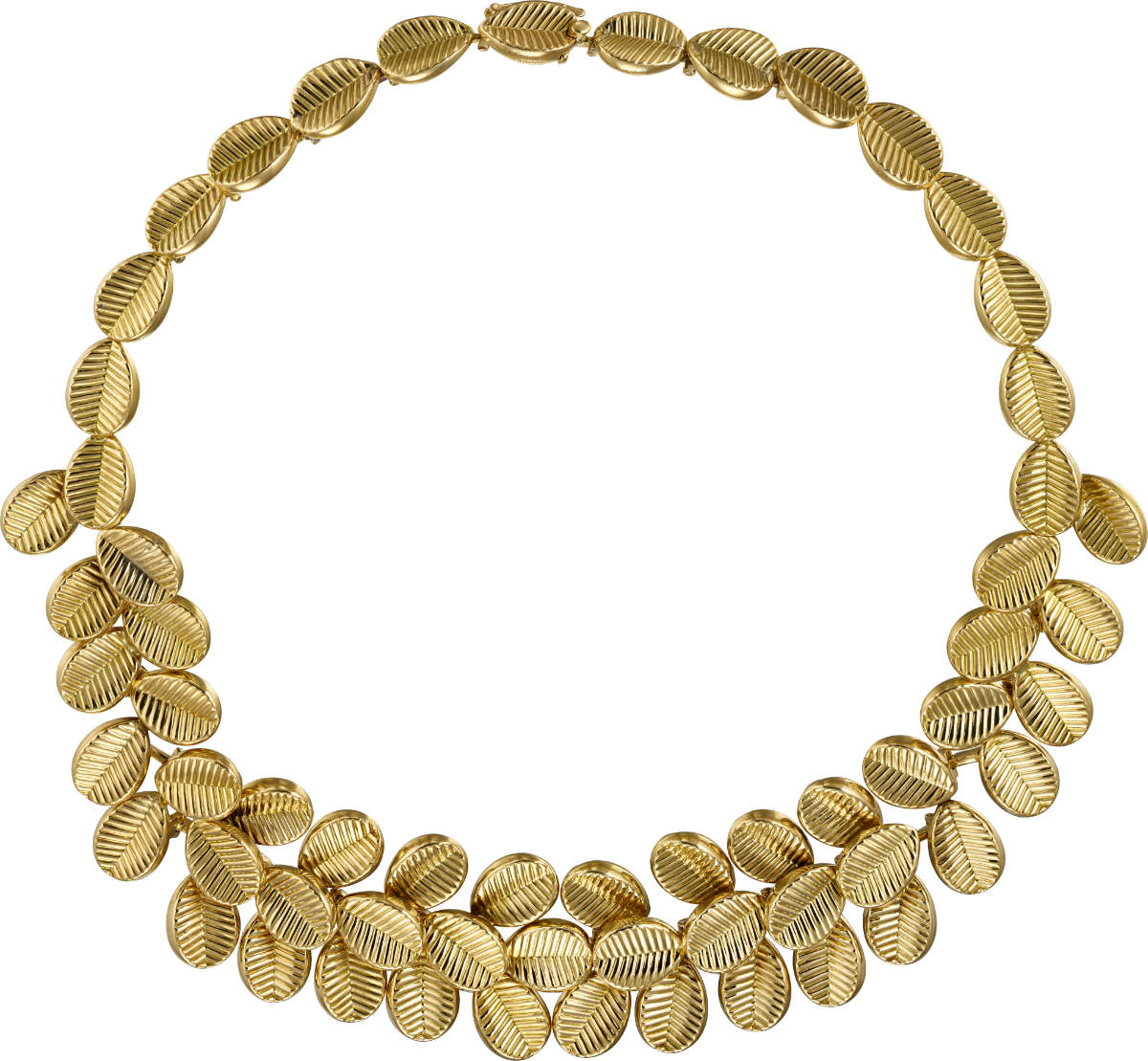
Coffee beans were one of Jeanne Toussaint’s preferred motifs, as illustrated by this set from 1955, from the Cartier Tradition department, which is one of the most iconic interpretations of her approach to working with gold. Smooth, knurled, interlaced, intermeshed, even articulated, it lent character to the settings.
Diamonds, sapphires... at Cartier, the stones are transformed into pistil, stem, petal, leaf or stamen. This stylisation, instead of creating a conventional representation of the flower, reinvents it through a more striking naturalism.












